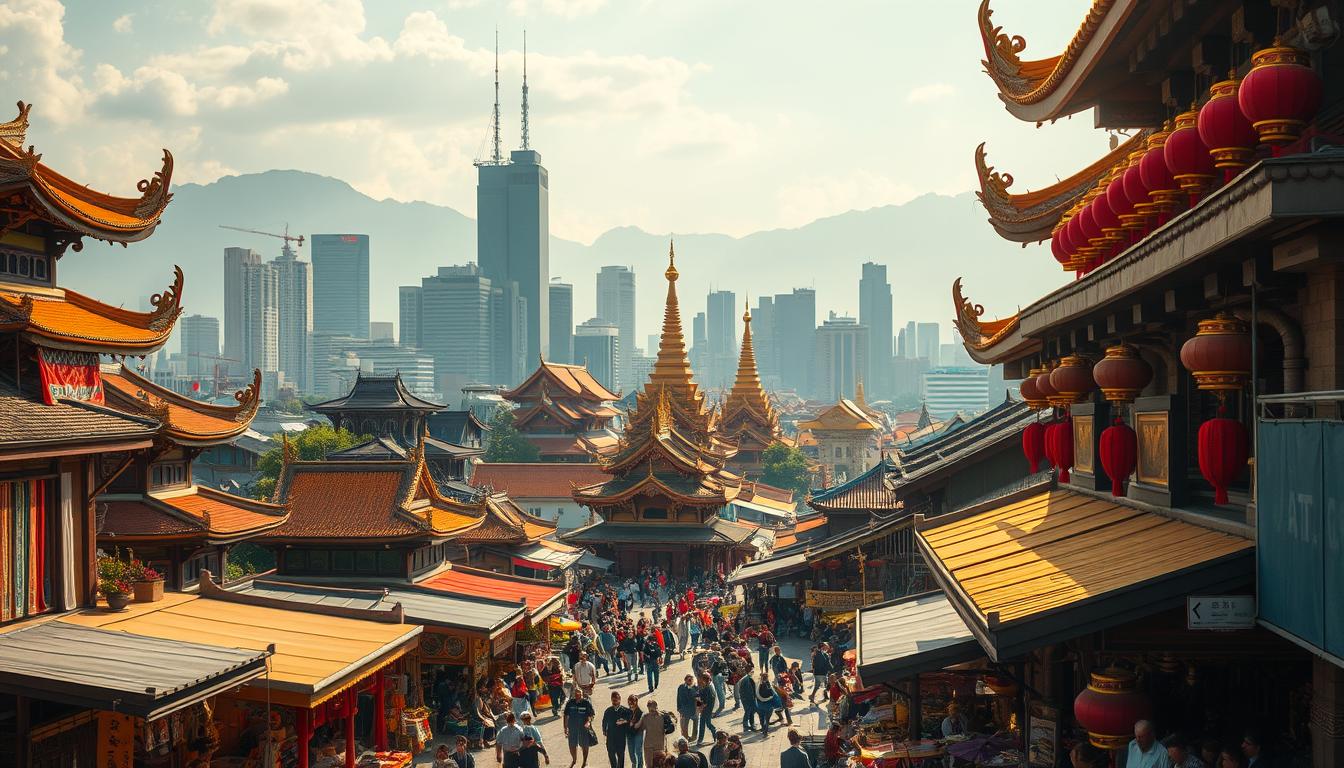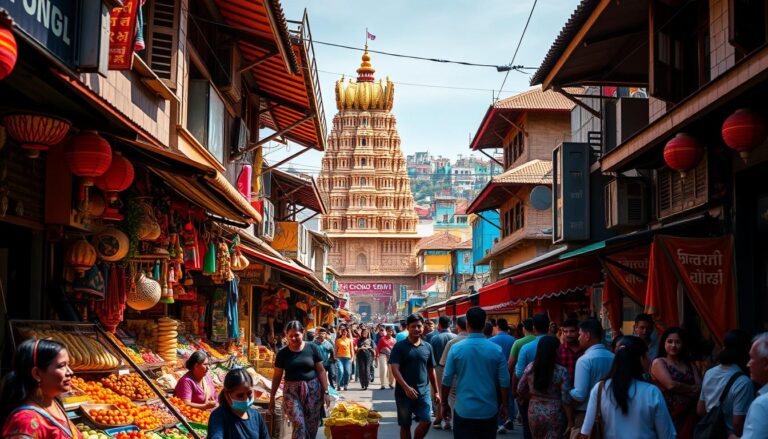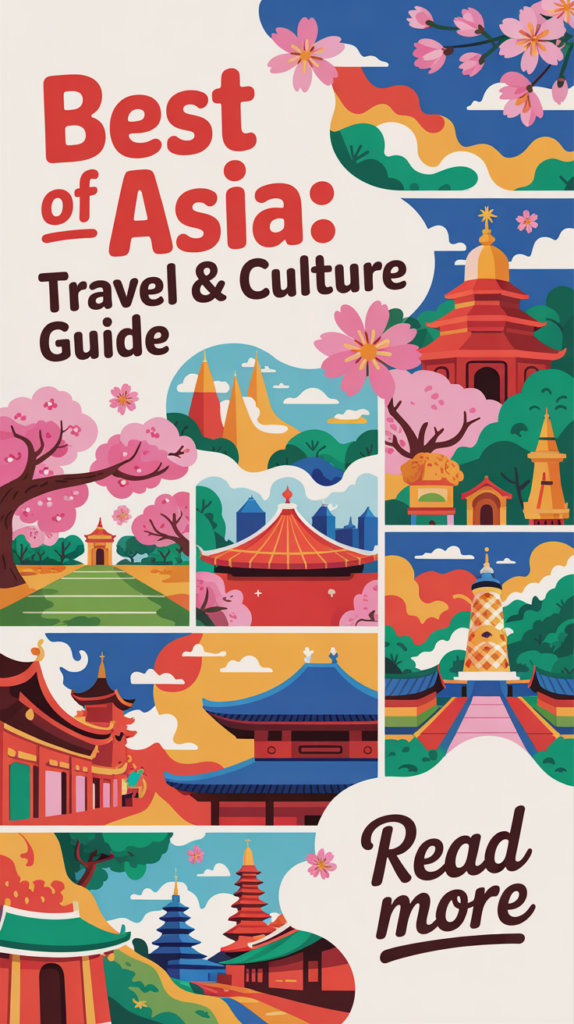
Imagine a continent where ancient traditions meet vibrant modernity, where bustling cities give way to serene landscapes. Asia is a treasure trove of experiences, offering something for every kind of adventurer. From the bustling streets of Bangkok to the serene landscapes of Bali, this incredible continent is a must-visit destination for any traveler.
Asia’s diversity is staggering. You can explore intricate temples, experience unique customs like the Thai wai, or savor the flavors of dishes like Pad Thai and Pho. Whether you’re planning a trip to Vietnam, Cambodia, or another destination, understanding local etiquette—from greetings to dining practices—is key to a respectful and enriching journey.
This guide is your ultimate resource for navigating Asia’s cultural landscape. We’ll cover practical tips, essential do’s and don’ts, and must-visit destinations. Dive into temple etiquette, business customs, and culinary highlights that will make your trip unforgettable.
Key Takeaways
- Asia offers a rich blend of historical and modern experiences for travelers.
- Understanding local customs and etiquette is crucial for a respectful visit.
- Practical tips and cultural insights are essential for a smooth journey.
- The guide covers temple etiquette, business customs, and culinary highlights.
- Asia is a top destination for American adventurers seeking unique experiences.
Exploring Asia’s Diverse Traditions
From the intricate rituals of temple visits to the heartfelt gestures of daily greetings, Asia’s traditions are a fascinating blend of history and modern life. Each country in this vibrant continent has its own unique customs, shaped by centuries of cultural evolution.
Historical Roots and Modern Influences
Many Asian customs have deep historical roots. For example, the wai greeting in Thailand, where hands are brought together in a prayer gesture, reflects respect for elders and traditions. Similarly, bowing in Japan and South Korea varies in depth and context, showing how ancient practices adapt to modern settings.
Regional Highlights and Cultural Stories
Across Asia, traditions vary greatly. In Japan, slurping noodles is a sign of enjoyment, while in South Korea, it’s considered rude. Temple etiquette, like removing shoes before entering, is common in countries like Vietnam and China, emphasizing respect for sacred spaces. These customs are not just practices; they are integral to daily life and interactions.
| Country | Traditional Greeting | Temple Etiquette |
|---|---|---|
| Thailand | Wai (hands together, bow) | Remove shoes |
| Japan | Bow (depth varies) | Remove shoes |
| South Korea | Bow (depth varies) | Remove shoes |
Understanding these customs enriches any visit, making interactions more meaningful and respectful. Whether you’re exploring temples or engaging in daily conversations, Asia’s traditions offer a window into its rich cultural tapestry.
Unlocking the Secrets of asia travel culture
Discovering the essence of Asia travel culture is more than just visiting landmarks; it’s about immersing yourself in the unique customs and traditions of each Asian country. Understanding these elements can transform your journey into a richer, more meaningful experience.
One of the best ways to uncover cultural nuances is by observing local greetings and dining habits. For instance, in Japan, exchanging business cards with a slight bow is a sign of respect, while in Thailand, the traditional wai greeting involves hands clasped together. These small gestures can make a big difference in how you connect with locals.
| Country | Traditional Greeting | Dining Etiquette |
|---|---|---|
| Japan | Bow (depth varies) | Slurping noodles is polite |
| Thailand | Wai (hands together, bow) | Use right hand for eating |
| South Korea | Bow (depth varies) | Wait for the host to start |
Hong Kong offers a fascinating blend of East and West, where modern skyscrapers stand alongside ancient temples. This unique mix makes it a prime example of how asia travel can offer both traditional and contemporary experiences in one visit.
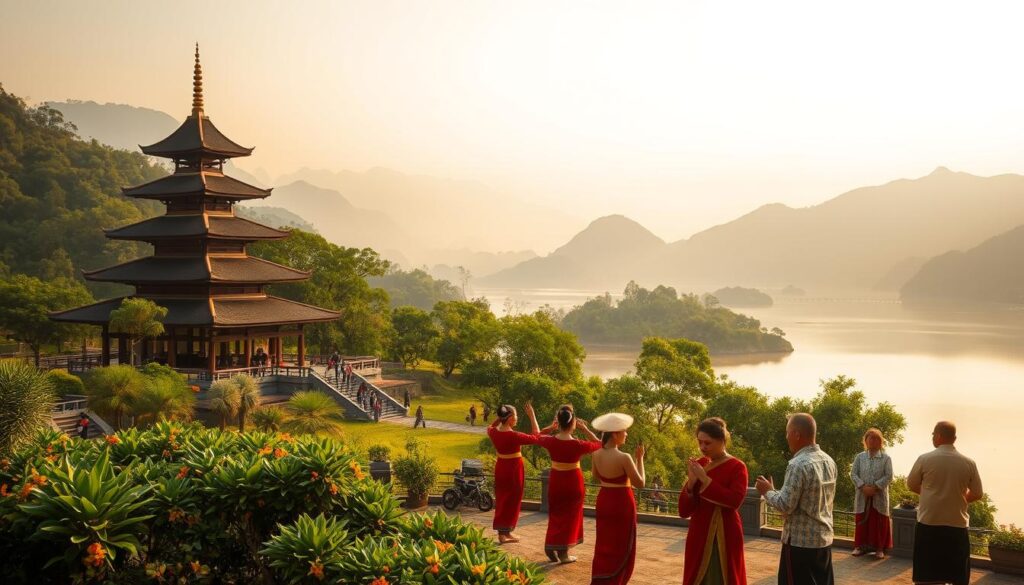
Preparing for your trip involves more than packing; it’s about learning local customs. Whether it’s understanding temple etiquette or respecting dining traditions, these insights will help you navigate your journey smoothly. By embracing these cultural practices, you’ll create memories that last a lifetime.
Navigating Social Etiquette in Asia
Social etiquette in Asia is a delicate blend of tradition and modernity, varying significantly from Western norms. Understanding these customs is essential for respectful interactions during your journey.
Greetings, Gestures, and Body Language
In many Asian countries, greetings involve more than just a handshake. The Thai wai, where palms are pressed together, is a common gesture of respect. In Japan and South Korea, bowing is customary, with the depth of the bow indicating the level of respect. It’s important to note that in some cultures, avoiding direct eye contact is a sign of respect, whereas in others, it may be seen as disrespectful.
Dining, Tipping, and Personal Space
Dining etiquette in Asia is equally nuanced. In Japan, slurping noodles is considered polite, while in other countries, it may be frowned upon. Tipping practices vary widely; for example, in some restaurants, leaving a tip is expected, while in others, it may be seen as impolite. Personal space is also culturally defined—some cultures value it highly, while others may stand closer during conversations.
Respecting Sacred Customs and Traditions
When visiting temples or sacred sites, removing your shoes is often required. In Sri Lanka, for instance, visitors are expected to dress modestly and avoid pointing their feet at religious symbols. Understanding these customs ensures a respectful and enriching experience.
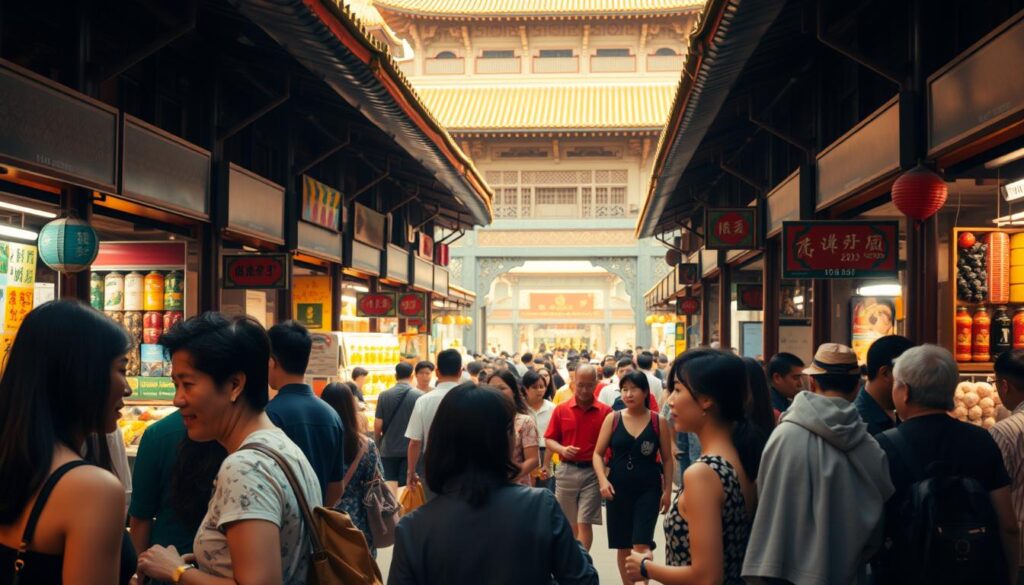
By embracing these cultural nuances, you’ll foster deeper connections and create lasting memories of your journey.
A Taste of Asia: Culinary Experiences
Asia’s culinary scene is a vibrant tapestry of flavors, offering a diverse array of dishes that cater to every palate. From the spicy kick of Thai curries to the delicate balance of Japanese sushi, each country presents a unique gastronomic journey. This section delves into the must-try meals and essential dining customs to make your culinary adventure unforgettable.
Local Cuisine Highlights and Must-Try Meals
Every Asian country boasts its own signature dishes, reflecting local ingredients and cultural traditions. Japan is famous for sushi and ramen, while Thailand tempts with pad thai and green curry. Vietnam’s pho and banh mi are equally iconic, offering a flavorful blend of herbs and spices.
| Country | Signature Dish | Key Ingredients |
|---|---|---|
| Japan | Sushi | Raw fish, rice, seaweed |
| Thailand | Pad Thai | Rice noodles, shrimp, peanuts |
| Vietnam | Pho | Beef broth, rice noodles, herbs |
These dishes are more than meals; they are cultural expressions that highlight the diversity of Asian cuisine.
Food Etiquette and Dining Tips
Dining in Asia comes with its own set of customs. In Japan, slurping noodles is a compliment, while in Thailand, using the right hand for eating is polite. Understanding these norms enhances your dining experience and shows respect for local traditions.
| Country | Eating Custom | Etiquette Tip |
|---|---|---|
| Japan | Slurping Noodles | It’s a sign of enjoyment |
| Thailand | Using Hands | Eat with your right hand |
| South Korea | Chopstick Etiquette | Don’t stand them upright |
By following these guidelines, you’ll navigate mealtime with confidence and appreciation for the local culture.
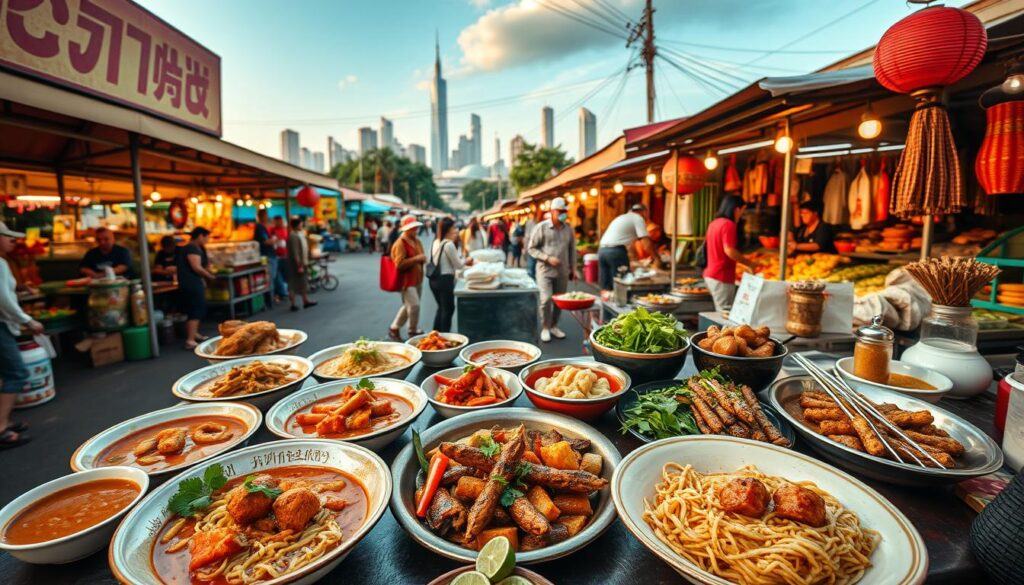
Whether you’re exploring street food markets or dining at a high-end restaurant, Asia’s culinary landscape promises a memorable experience. With these insights, your journey through the flavors of Asia will be both delicious and respectful.
Exploring Iconic Destinations Across Asia
Asia is home to some of the world’s most iconic destinations, blending vibrant cities with hidden gems. Whether you’re exploring bustling metropolises or serene landscapes, each location offers a unique cultural experience.
City Tours, Attractions, and Hidden Gems
From the neon-lit streets of Tokyo to the historic temples of Angkor Wat, Asia’s cities are a treasure trove of attractions. Tokyo Disneyland in Japan is a must-visit for families, while Hong Kong’s Po Toi Island offers a peaceful escape with its stunning natural beauty. For a mix of tradition and modernity, Taipei’s night markets are a sensory delight.
| Destination | Attraction | Highlight |
|---|---|---|
| Tokyo, Japan | Tokyo Disneyland | Magical theme park experience |
| Hong Kong | Po Toi Island | Scenic hiking trails and beaches |
| Taipei, Taiwan | Night Markets | Street food and local crafts |
![]()
Don’t miss the opportunity to explore hidden gems like Uji in Japan, famous for its matcha delights, or Taiwan’s Sun Moon Lake, offering breathtaking views. These destinations provide a glimpse into Asia’s rich cultural tapestry, ensuring an unforgettable journey.
Immersive Cultural Experiences & Local Customs
Cultural immersion is the heart of any meaningful journey. Across Southeast Asia, vibrant festivals and daily customs offer a gateway to understanding the region’s rich heritage. These experiences allow travelers to connect deeply with local traditions, creating lasting memories.
Traditional Festivals and Ceremonies
Traditional festivals are a cornerstone of cultural expression. Thailand’s Songkran Water Festival, for instance, is a celebration of renewal and community bonding. Participants engage in water fights that symbolize cleansing and new beginnings. Similarly, India’s Holi festival, known for its colorful rituals, brings people together in joy and unity.
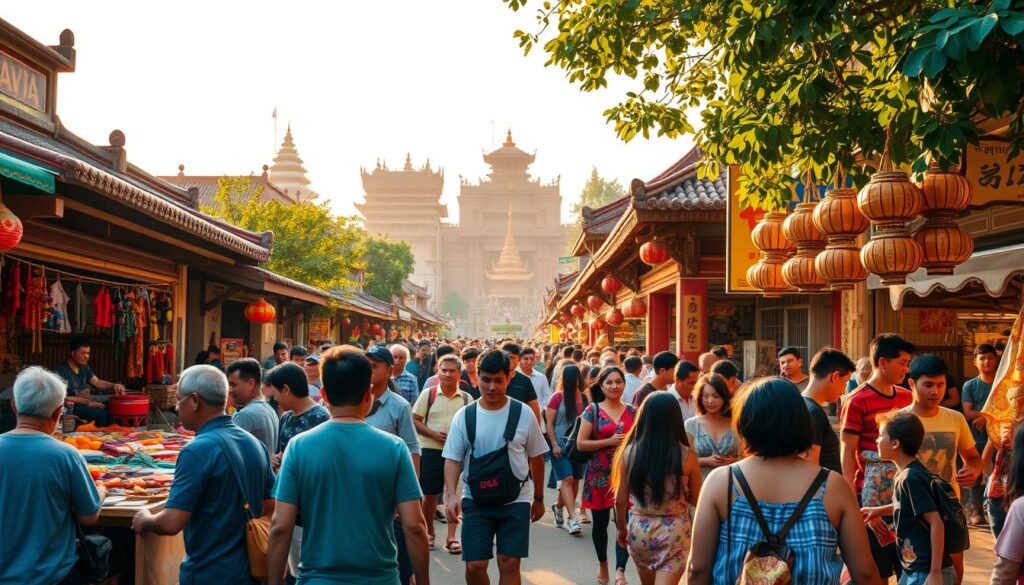
These events are more than just celebrations; they are a window into the soul of a culture. They provide a unique opportunity for travelers to participate and learn about local customs firsthand.
Everyday Life and Community Traditions
Daily customs shape the fabric of community life. In many Southeast Asian countries, respect for elders and communal meals are integral to daily routines. For example, in Vietnam, the act of sharing a meal is a sign of hospitality and togetherness.
- Respect for elders is a cornerstone of social etiquette.
- Communal meals foster a sense of unity and belonging.
- Local markets offer a glimpse into daily life and traditions.
Understanding these customs can transform a trip into a meaningful cultural experience. By embracing local practices, travelers can build deeper connections with the communities they visit.
Travel Planning: Tips and Expert Advice
Planning a trip to Asia is an exciting adventure that requires careful preparation to ensure a smooth and enjoyable journey. From booking the right accommodations to navigating local transportation, understanding the logistics of your destination is key to a stress-free experience.
Booking and Accommodation Insights
Choosing the right hotel can make a big difference in your trip. Consider options that offer a balance of comfort and authenticity. For instance, in Japan, ryokans provide a traditional experience, while in Thailand, boutique hotels blend modern amenities with local charm. Always read recent reviews and check the location’s proximity to attractions.
| Country | Popular Hotel Options | Key Features |
|---|---|---|
| Japan | Ryokans | Traditional ambiance, local cuisine |
| Thailand | Boutique Hotels | Modern amenities, cultural design |
| Vietnam | Eco-Lodges | Natural settings, sustainable practices |
Transportation and Ride-Hailing Tips
Navigating transportation in Asia can be straightforward with the right apps. In Indonesia, Gojek is a popular choice for rides and deliveries, while in India, Ola offers reliable services. For inter-city travel, consider budget airlines or overnight trains for cost-effective options.
| Country | Popular Ride-Hailing Apps | Alternative Transport |
|---|---|---|
| Indonesia | Gojek | Motorbike taxis |
| India | Ola | Auto-rickshaws |
| Thailand | Grab | Tuk-tuks |

By planning ahead and understanding local logistics, you can enjoy a seamless and memorable journey through Asia. Remember to stay flexible and open to new experiences, as each destination offers unique adventures and cultural insights.
Balancing Adventure with Respect for Local Customs
Embarking on a journey through diverse regions offers thrilling adventures, but it’s equally important to respect local customs. This balance ensures a meaningful and enriching experience for both travelers and the communities they visit.
One traveler shared a story about unintentionally offending a local by asking direct personal questions. They learned that in many cultures, indirect communication is preferred. This experience highlights the importance of adapting your approach to respect local norms.
- Maintain respect for cultural practices while exploring adventurous activities.
- Balance personal exploration with sensitivity toward local customs to avoid misunderstandings.
- Learn local social cues, like understanding when to avoid direct eye contact or personal questions.
- Even a short week-long trip can be enriched by thoughtful cultural interactions.
- Practical tips, such as adjusting tipping habits, can smooth cross-cultural encounters.
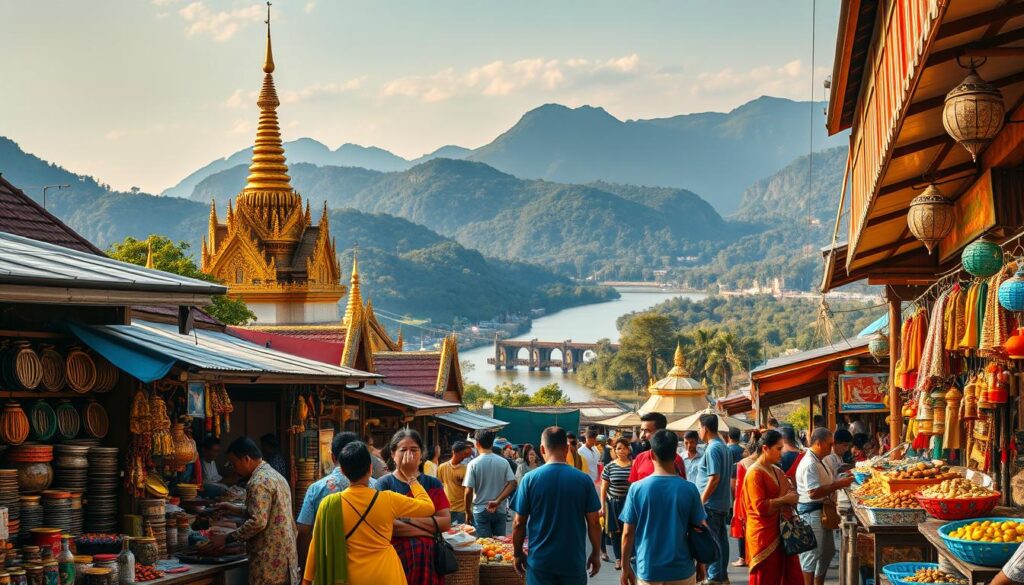
By embracing each area’s uniqueness and being mindful of customs, travelers can build a respectful and memorable journey. Remember, a little thoughtfulness goes a long way in fostering positive interactions and creating lasting memories.
Navigating Asia’s Unique Business and Social Norms
Understanding the intricacies of business and social norms in Asian countries is crucial for fostering positive interactions. These norms are deeply rooted in cultural values such as respect, hierarchy, and relationships.
Understanding Guanxi, Face, and Relationship Building
In many Asian cultures, building strong relationships, known as “guanxi,” is essential for successful business interactions. This concept emphasizes trust and mutual respect, which can significantly influence business outcomes. For instance, in China, establishing guanxi can open doors to new opportunities and partnerships.
Maintaining “face” is another critical aspect of social interactions. In countries like Japan and South Korea, avoiding actions that cause embarrassment is vital. This includes being mindful of direct communication, as indirectness is often preferred to preserve harmony.
| Country | Business Etiquette | Key Practices |
|---|---|---|
| Japan | Business Card Exchange | Use both hands, bow slightly |
| South Korea | Respect for Hierarchy | Address seniors with honorifics |
| China | Guanxi Building | Invest time in personal relationships |
Regional differences in business customs require adaptability. For example, while Japan values formality and punctuality, India may embrace a more flexible approach. Understanding these nuances helps in forming genuine partnerships and navigating both formal and informal settings effectively.
By respecting local customs and building meaningful relationships, travelers and professionals can create lasting connections and ensure mutually beneficial interactions in their journeys across these diverse regions.
Making the Most of Your Journey: Bucket List Destinations
Asia is a continent where every journey is a discovery, blending iconic landmarks with hidden gems that captivate the soul. Whether you’re chasing adventure or seeking serenity, these must-see destinations promise unforgettable experiences.
Top Must-See Attractions and Experiences
Start your journey in Vietnam, where the stunning karst landscape of Ha Long Bay awaits. For a truly unique experience, consider a sunrise visit to the Great Wall of China, a testament to history and engineering marvel. These iconic spots are just the beginning of your adventure.
| Destination | Highlight | Tip |
|---|---|---|
| Ha Long Bay, Vietnam | Kayaking through emerald waters | Visit during spring for calm seas |
| Great Wall of China | Witnessing a historic wonder | Explore less crowded sections |
| Angkor Wat, Cambodia | Exploring ancient temples | Guided tours offer deeper insights |
Cultural Highlights and Local Immersion
Immerse yourself in the vibrant streets of Tokyo, where tradition meets modernity. Experience the tranquility of a traditional tea ceremony in Kyoto, gaining insight into Japan’s rich cultural heritage. These cultural highlights offer a deeper connection to the region’s soul.
Natural Wonders and Vibrant Cities
For nature enthusiasts, the towering peaks of Mount Everest in Nepal offer breathtaking views. Meanwhile, the bustling streets of Bangkok provide a sensory overload of flavors, sights, and sounds. Each destination promises a unique adventure.
Conclusion
As you conclude this journey through the ultimate guide to Asia, remember that each destination offers a unique tapestry of experiences. From the respectful gestures of South Korea to the vibrant energy of Hong Kong, every moment is an opportunity to immerse yourself in rich traditions. Whether you’re exploring bustling cities or serene islands, careful planning and an open mindset will enhance your adventure.
Indulge in the diverse cuisines, from the bold flavors of street food to the delicate art of traditional teas. Allocate ample time to discover hidden gems, whether it’s a tranquil island or a historic site. By respecting local customs and embracing cultural practices, you’ll create memories that last a lifetime.
Start planning your next journey with a commitment to cultural respect and curiosity. Let every part of your adventure be both enjoyable and meaningful. The transformative power of immersive travel awaits—embark on your Asian journey with confidence and an open heart.

